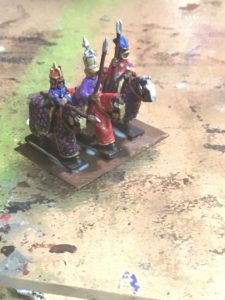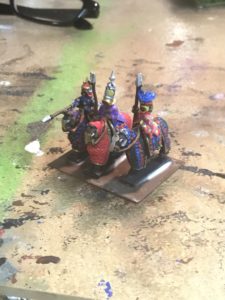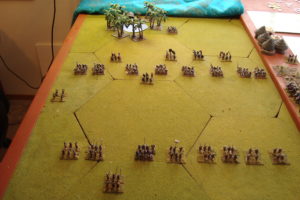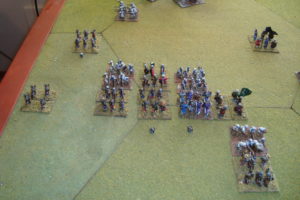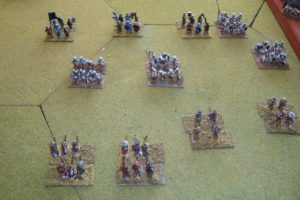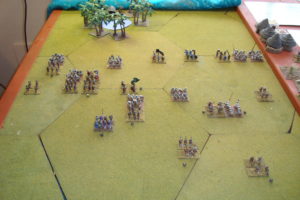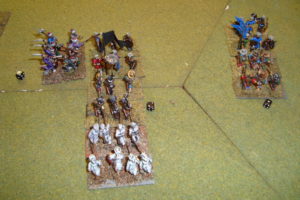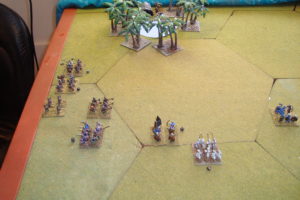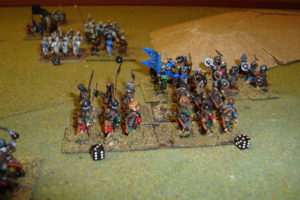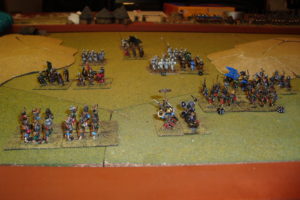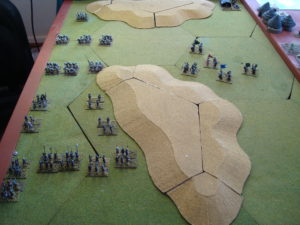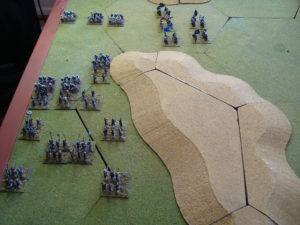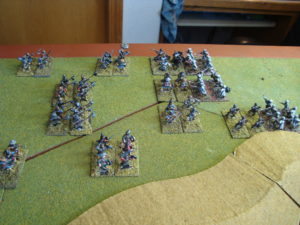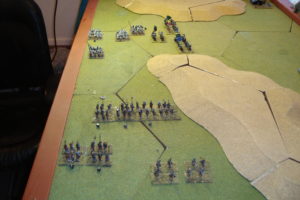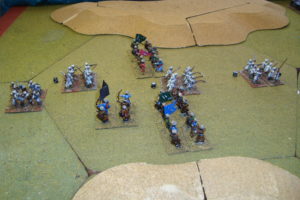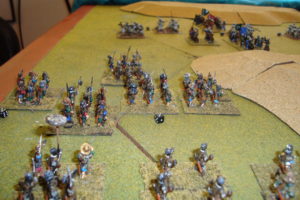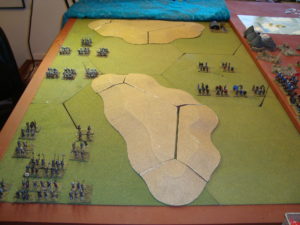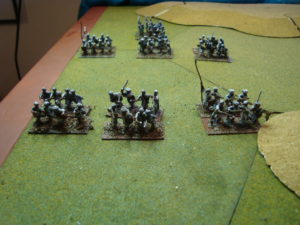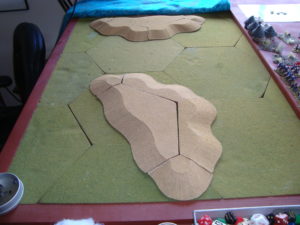Well, the breather has taken a few years. After completing the last of my Irregular Wars forces, the East African campaign had to be re-booted. Here is the updated situation.
After defeating the Portuguese, Bey Imen Mahir established a semi-automonus sultanate in Behefe. He pays annual tribute to Sultan Efe, but controls the city and the surrounding area. The Bey’s relationship with the natives in Neo is good, as he is a benevolent ruler, requiring only minimal tribute. The locals hold him in high regard, and will eagerly fight for him if the Portuguese or other aggressors appear. He is now an experienced leader, and while not a heroic leader, is no longer considered “shy” by his followers.
Sultan Jabir Efe maintains in control of Meheyne, and has convinced the Ming Chinese leader in Aden, Lei Qiu, to establish a stronger trading presence at his port city. Efe’s relationship with the natives in Sanwa is still good, but they are leery of any formal alliance, content to take advantage of the increased trade at Meheyne. Sultan Efe is content to increase his wealth through trade and taxation, and has no immediate plans for military adventures. He is an experienced, but cautious, leader.
Lord Riccardo Nicholau Renaldo still has overall command of the Portuguese forces in Ekene. However, his reverses have not endeared him to Portuguese leadership in Lisbon. He is on a short leash, receiving minimal government support. Future failure will not be tolerated. Still, his confidence remains high. Lord Renaldo commands the loyalty of his small army, which has been reorganized after the retreat from the outskirts of Behefe. His relationship with the natives in Kattego is not good. The Portuguese have undertaken a number of “foraging” sorties, and has taken, not paid, for livestock and crops. Monsoon season is coming and his Lordship is contemplating an expedition to subjugate Kattego, taking direct control of the village and its resources. Still a bold leader, Renaldo is anxious to re-establish his prestige, and is planning to seize Mwenye in the near future.
A new development is rumors that an Imam has emerged in the interior preaching opposition to Zanj domination of the region. His message has an appeal to both Muslim and long-standing Akamaba and Massai beliefs. However, little is known about him or his exact whereabouts.
In addition to these shenanigans, a “Northern Area of Operations” will open using the historical 16th century regimes of Medri-Bahri (Eriteria), Ajuran Sultanate (Somalia), Adal Sultanate (Somalia) and the Kingdom of Abyssinia. The Ottomans will be an active presence, as will, to a lesser extent, the Ming Chinese and Portuguese. The latter two will continue to be active in the “Southern Area of Operations”.
Lord Renaldo’s expedition against Kattego will reopen the campaign. His sortie from Ekene will serve as a rules refresher, with the outcome prompting reactions in the South.
